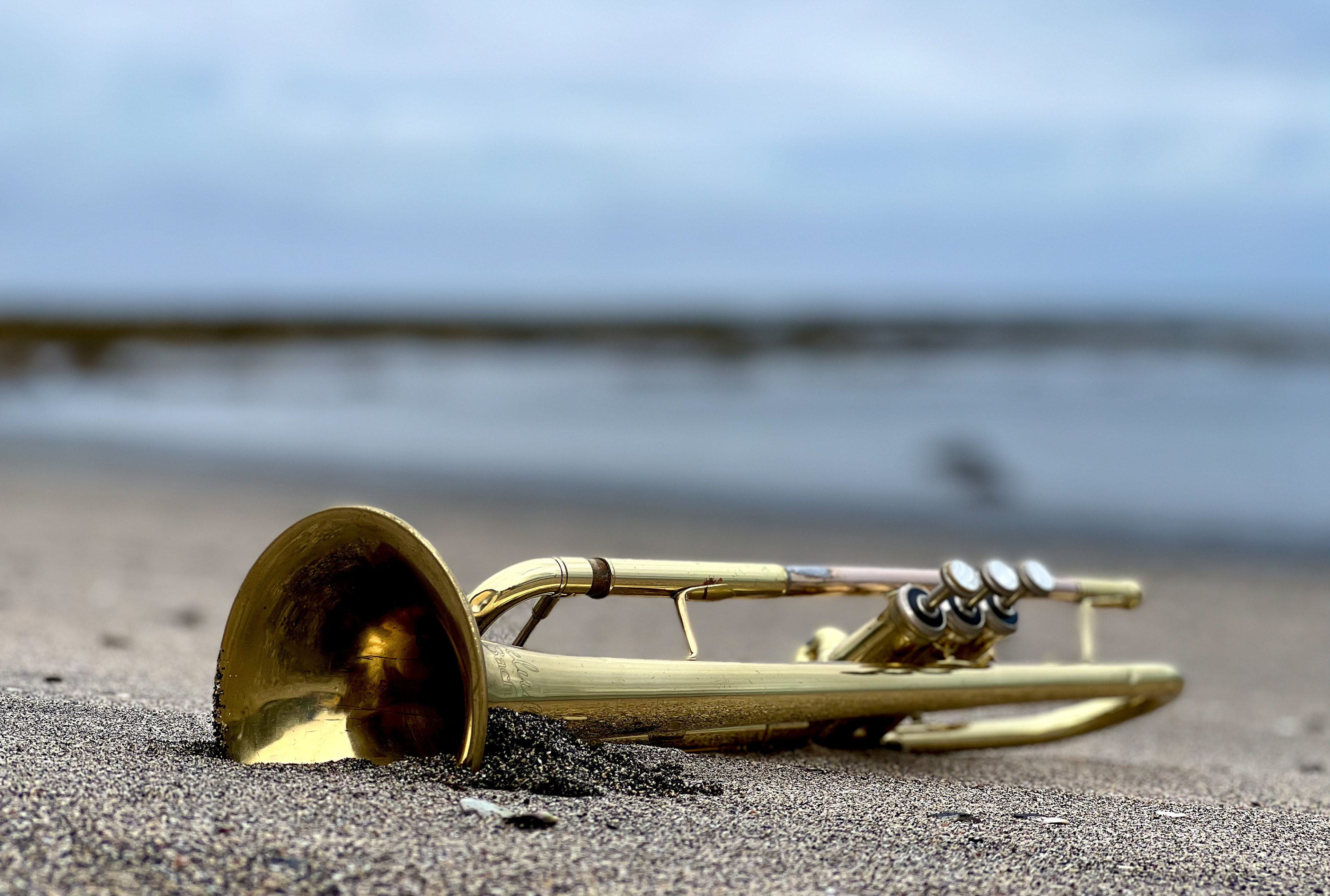Director: Angela Rawlings
Cinematographer: Patrik Ontkovic
Composer: José Luis A. Anderson Esquivel (Andervel)
Premiere: 22 September 2022, National Arts Centre (Canada) Kipnes Lantern
Sand blows across a stranded trumpet. A winter moth scales a violin. Glacier meltwater percusses a timpani mallet. Sulphur steams through a flute.
As macro-video art created for NACO’s SPHERE Festival and the Kipnes Lantern, Sonosphere pairs Icelandic ecosystems with symphony orchestra instruments. The grand scale of the Lantern’s video façade juxtaposes with the macro-intimacy of sandstorm, moth, meltwater, geothermal steam, and musicians caressing their instruments.
Each Icelandic ecosystem emphasizes components from one of the four primary planetary systems (lithosphere, biosphere, hydrosphere, atmosphere). Selected from within each of the four orchestra instrument families (brass, strings, percussion, woodwinds), a musical instrument is then played by an ecosystem component. In situ videos are shot in summer 2022 at Icelandic geographic phenomena—black-sand beach, moss-covered lava field, melting glacier, and sulphuric fumarole.
Lithosphere
A trumpet lays half-buried in black sand on a beach in southwest Iceland. Sand particles amass along and impact the trumpet’s body, performing a frenzy of climate crisis’ tell-tale markers: erosion, desertification, mass whale stranding, marine heating, increased storminess. Two weeks prior to filming, this beach was the site of a whale stranding. The trumpet lays in the whale’s stead, sand sounding body in a land where whale (hval) is pronounced like suffering (kval).
Biosphere
In Icelandic, fiðla translates as violin and fiðrildi as lepidoptera (butterflies and moths). The shared fið- of these words manifests their corporeal becoming-together in a moss-covered lava field. Under an Icelandic midnight sun, a violin rests on wooly moss (Racomitrium lanuginosum) that has colonized bare rock. The moss is home to thyme, birch, berries, moths. A winter moth (Operophtera brumata) flutters between the violin, Arctic thyme (Thymus praecox arcticus), and three-leaved rushes (Juncus trifidus). Here, violin strings become moth’s antenna becoming slender rush leaves.
As a young geologic landmass, Iceland is optimal for studying how flora and fauna colonize bare rock. The fragile yet flourishing subarctic ecosystem obviates the impacts of introduced species and biodiversity loss.
Hydrosphere
What the glacier holds as recorded time in its layers of ash, ice, grit, ice, silt now melts. Time melts. The glacier drips onto percussion mallets, soaks their soft felt. Timpanic melt. Felt urgency. Drummed surge. Felt the glacier melt silt. Soft. How to listen in the time of glacial melt. How to keep time with this glistening thaw.
Percussion mallets sit on a site of active melt—Sólheimajökull, the glacier that is home to the sun. In the past decade, Sólheimajökull has receded nearly a kilometre. Glaciologists predict Iceland’s glaciers will vanish entirely within 150-200 years. Of 300 named glaciers, the Icelandic Meteorological Office cites 56 that have disappeared as of 2017.
Atmosphere
Harmonic tremors pulse unrest in the Meridalur eruption, thirty kilometres southwest of Reykjavík. It is summer. It is nearly night. The volcano spews sulphur dioxide, carbon dioxide, hydrogen fluoride, and particulate matter into the atmosphere. Pollution forms acid rain.
East of the eruption, Krýsuvík’s sulphur field gleams white and yellow in late summer light. Crystal teeth line a fumarole’s mouth; steam exhales skyward. Sulphur stains the flute’s metal black. Night. Steam heats each key. Tremor. Pulse. Restlessness.
The trumpet was sourced from Iceland’s sole brass-instrument repair technician, Ingi Garðar Erlendsson. Cinematographer Patrik Ontkovic lent his violin for moss and moth encounters. Former timpanist, Sonosphere director, and SPHERE co-curator Angela Rawlings shared percussion mallets with the glacier. The flute was acquired from Iceland’s only woodwind repair technician, Sverrir Guðmundsson.

Sólheimajökull and percussion mallet
